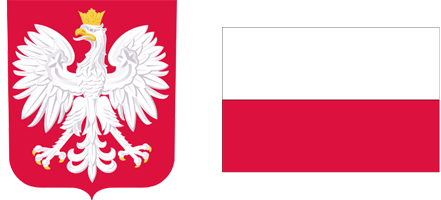ORIGINAL ARTICLE
The role of plants in the economy of Tell Arbid,
north-east Syria, in the Post-Akkadian Period
and Middle Bronze Age
1
W. Szafer Institute of Botany, Polish Academy of Sciences, Lubicz 46, 31-512 Kraków, Poland
2
Institute of Prehistory, Adam Mickiewicz University, Święty Marcin 78, 61-809 Poznań, Poland
Online publication date: 2013-12-31
Publication date: 2013-12-31
Acta Palaeobotanica 2013; 53(2): 263-293
KEYWORDS
charred seeds and fruitscerealswild plantsharvest methodsPost-Akkadian PeriodMiddle Bronze AgeTellArbidSyria
ABSTRACT
Archaeological fieldwork carried out at the Tell Arbid site in north-eastern Syria exposed settlement
remains dating from the early 3rd millennium BC to the mid 2nd millennium BC. Recent excavations in
Sector P, on the eastern slope of the site, revealed the existence of a significant occupation of the Post-Akkadian/
Early Jazirah V period and of levels dated to the Early and Classic Khabur Ware/Old Jazirah/Middle Bronze Age
I-II periods. Cereal remains were dominated by grains and ear fragments of hulled two-rowed barley Hordeum
distichon. Less numerous were wheats represented by emmer Triticum dicoccon, einkorn T. monococcum, and
macaroni wheat T. durum. The presence of bread wheat T. aestivum and six-rowed barley Hordeum vulgare
could not be excluded. The two periods contained similar sets of cereals, but in the Post-Akkadian Period the
percentage of hulled wheat remains was higher, while in the Middle Bronze Age (particularly in its younger
phase) naked wheat slightly exceeded hulled wheats. Legumes were represented by only very few seeds of lentil
Lens culinaris and bitter vetch Vicia ervilia. Diaspores of wild plants were very abundant, particularly those
from the families of grasses and legumes. The considerable number of ear and culm fragments probably belonging
to cereals as well as numerous seeds/fruits of wild plants suggests that the plant remains originated from
fodder or animal dung or belonged to threshing waste. The presence of grass stems with nodes indicated that
cereals were reaped low on the straw; occasional use of uprooting was suggested by the occurrence of basal culm
fragments with traces of rootlets.
CITATIONS (5):
1.
Assessment of phenotypic diversity in bitter vetch (Vicia ervilia (L.) Willd.) populations
Iraklis Livanios, Efstathia Lazaridi, Penelope Bebeli
Genetic Resources and Crop Evolution
Iraklis Livanios, Efstathia Lazaridi, Penelope Bebeli
Genetic Resources and Crop Evolution
2.
Plant macrofossils from the site of Tell Arbid, Northeast Syria
(3rd–2nd millennium BC). Preliminary report
Aldona Mueller-Bieniek, Krystyna Wasylikowa, Anna Smogorzewska
Polish Archaeology in the Mediterranean
Aldona Mueller-Bieniek, Krystyna Wasylikowa, Anna Smogorzewska
Polish Archaeology in the Mediterranean
3.
New archaeobotanical evidence for Trigonella foenum-graecum L. from the 4th century Serdica
Tzvetana Popova
Quaternary International
Tzvetana Popova
Quaternary International
4.
Plant remains from Jiyeh/Porphyreon, Lebanon (seasons 2009–2014): preliminary results of archaeobotanical analysis and implications for future research
Monika Badura, Ewelina Rzeźnicka, Urszula Wicenciak, Tomasz Waliszewski
Polish Archaeology in the Mediterranean
Monika Badura, Ewelina Rzeźnicka, Urszula Wicenciak, Tomasz Waliszewski
Polish Archaeology in the Mediterranean
5.
Radiocarbon Dating of the Transition from the Early to the Middle Bronze Age in Northeastern Syria
Rafał Koliński, Tomasz Goslar
Radiocarbon
Rafał Koliński, Tomasz Goslar
Radiocarbon
We process personal data collected when visiting the website. The function of obtaining information about users and their behavior is carried out by voluntarily entered information in forms and saving cookies in end devices. Data, including cookies, are used to provide services, improve the user experience and to analyze the traffic in accordance with the Privacy policy. Data are also collected and processed by Google Analytics tool (more).
You can change cookies settings in your browser. Restricted use of cookies in the browser configuration may affect some functionalities of the website.
You can change cookies settings in your browser. Restricted use of cookies in the browser configuration may affect some functionalities of the website.


